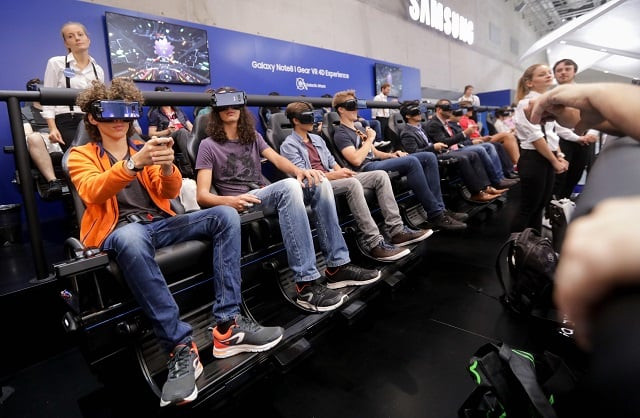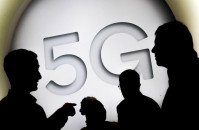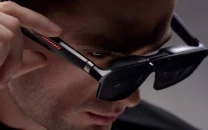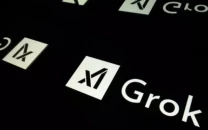High-def TVs rule the roost at Berlin's IFA
60 per cent of people aged 16-39 are watching more TV than previously as they switch to on-demand viewing

Visitors try out VR glasses and their appliances at the booth of Samsung at the IFA Consumer Electronics Fair in Berlin on September 1, 2017. The fair is open for the public from September 1 to 6, 2017
PHOTO: AFP
Rather than just fantasise when they gather in front of an imposing 77-inch (195-centimetre) home cinema-style display, gawkers eagerly ask salespeople about the price and when they will be available. With Ultra-High Definition (UHD) broadcasts set to become more common, "standards and norms are beginning to become established," said Paul Gray of consultancy IHS.
Paris, Berlin to develop European fighter jet system
"For the first time as a consumer, you can be reasonably sure that a set purchased this year will be usable when broadcasts start in earnest." Growing confidence about technical standards and intense price competition between manufacturers "is creating a 'must-have' phenomenon" among consumers, said Hans-Joachim Kamp, president of the GFU federation which co-organises IFA. Increasingly tech-savvy buyers are less interested in the size of the screen and more in its resolution, Gray added.
In Germany, households own televisions for five years on average, with consumers spending around 600 euros ($710) out of a budget of 800-900 euros on new purchases. That remains well short of asking prices for the top-of-the-range sets on display at this year's IFA, which start at between 1,500 and 2,000 euros and almost all boast OLED screens. With individually illuminated pixels, OLED offers a high-contrast image with deep blacks and unprecedented sharpness in moving images.
Only Samsung dismisses OLED as a gimmick, preferring its own invention of traditional LCD screens enriched with extra crystals, known as QLED. The Korean firm's TV sets produce similar results to its competitors', from dazzling car headlights to hyper-real droplets of blood during a boxing match - to say nothing of spectacular video game effects. Far from being befuddled by the high-tech arms race, consumers' interest has been piqued, with UHD sets accounting for 29 per cent of TVs sold worldwide between January and June, according to GFU. Sales of OLED TVs have doubled in the same period.
The incomplete part of the puzzle is perhaps the most important: the content the top-end screens will display. Most manufacturers brought along one of their new and indispensable best friends to IFA, in the shape of Hollywood studios. Panasonic announced a partnership with 20th Century Fox and Samsung is to develop a future format known as HDR10+ and put it in the public domain. How series and films reach TVs is also changing quickly, as an internet connection to access very-high-definition on-demand video becomes indispensable.
Samsung secures self-driving car permit in California
"VOD resonates hugely with consumers, from being able to binge-watch a box set of episodes to decoupling from linear delivery of conventional TV," Gray said. "New providers are emerging - my teenage sons watch Youtube and Netflix as their default providers, not terrestrial broadcast." According to GFU, 60 per cent of people aged 16-39 are watching more TV than previously as they switch to on-demand viewing, with the very youngest especially turning to the screen in the living room as they tire of tablets, phone apps or the desktop computer.



















COMMENTS
Comments are moderated and generally will be posted if they are on-topic and not abusive.
For more information, please see our Comments FAQ